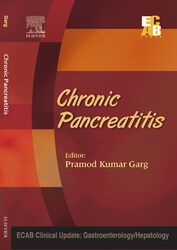「重要なお知らせ:日本語書籍をご購入いただき、eLibraryをご利用の皆さまへ」
エルゼビアは、より快適にサービスをご利用いただくため、システムの重要なアップデートを実施いたします。
現在、新サイト、eBooks+への移行が進められています。
新規ユーザー登録および書籍の登録はElsevier eLibraryでは停止しております。
12月15日以降に
こちらよりご利用・ご登録ください。
Book Description
Chronic pancreatitis (CP) is defined as a continuous or recurrent inflammatory disease of the pancreas characterized by progressive and irreversible morphological changes. It typically causes pain and permanent impairment of pancreatic function. In chronic pancreatitis, areas of focal necrosis are typically associated with perilobular and intralobular fibrosis of the parenchyma, by stone formation in the pancreatic duct, and by the development of pseudocysts. Late in the course of the disease a progressive loss of endocrine and exocrine function occurs.
In the past, chronic pancreatitis was considered to be mostly associated with chronic alcohol abuse. During the past 2 decades idiopathic chronic pancreatitis and, moreover, hereditary pancreatitis have been recognized as distinct disease entities. Usually the diagnosis is made by a combination of imaging procedures such as ultrasound and endoscopic retrograde cholangiopancreatography, and exocrine and endocrine function tests. Therapy is presently restricted to symptom control for the lack of a causal treatment strategy. Thirty to sixty percent of all patients develop disease-associated complications such as persistent pain, strictures of the common bile duct, or pancreatic duct stones that may require either endoscopic or surgical treatment.
Chronic pancreatitis is a difficult condition to live with as well as to treat. Optimal care needs to be carried out in a multidisciplinary environment that can address both the physical and psychological aspects of the disease. It is commonly seen in alcohol-dependent individuals, but many other groups of individuals suffer with irreversible inflammatory destruction of the pancreas. Abdominal pain is the predominant feature and pain specialists are an important part of any pancreatic team. Exocrine and endocrine failure are addressed by appropriate nutrition with supplements and insulin, whilst the complications that are seen over time, may require a combination of endoscopic and surgical treatment.
This clinical update has been designed to update the readers on the important aspects of CP. The book has stressed upon various aspects of the condition like the etiology, pathogenesis, diagnosis and evaluation along with an insight into the management approach of the patient. Supportive case scenarios have also been incorporated with relevance to the topics covered under the book. Overall, the book presents to the readers an excellent compilation of clinically applicable literature sourced from the most acclaimed physicians in the country.


 (0 rating)
(0 rating) 




